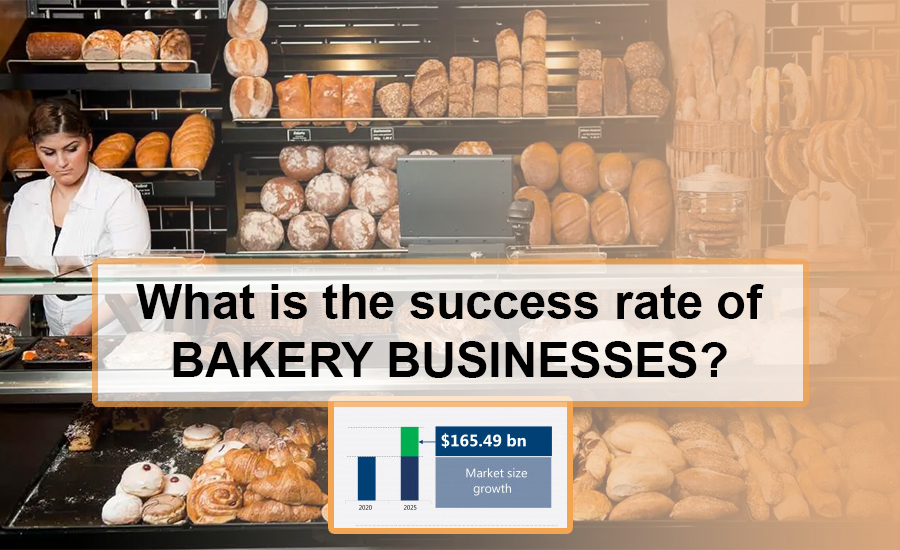According to an estimation, the success-to-failure ratio of bakery businesses is 1:5. It means 1 from every 5 bakery businesses fail each year. Aside from this general estimation, you may want to know the expenses, profit, and beyond to start a successful bakery brand! Well, I will explain the success rate, profitability, expenses and major mistakes while starting a bakery brand.
Table of Contents
ToggleAre Bakeries Profitable
Most bakeries usually make around 4% to 9% in profit. But keep in mind that this can change based on the type of bakery and how well it’s doing. If a bakery is super successful, the profit can even shoot up to 14%-15%. This means while bakeries can earn a regular income, they have a chance to make a lot more if things go really well and they break free from the usual profit margins.
Running a bakery can be a money-maker, but success hinges on different things. Where you set up shop, who your competition is, how much you sell, and the costs you have all play a big part in how well your bakery does. Some bakeries may find it hard to make money because of high costs and lots of competition. On the flip side, others do great by having special treats, smart marketing, and keeping happy customers. Bakery owners need to really look at how they do business, control costs, and stay on top of what people want to keep their bakery making the most money in a busy market.
Bakery expenses list
Ingredients are the things you use to make your baked goods, and they’re the costs that easily change. Think flour, sugar, yeast, and more, the stuff that goes into your bakery products. For example, if your business spends $10,000 on ingredients this month and you bake 10% more next month, expect your ingredient cost to also go up by 10%, or $1,000.
Supplies and packaging materials are costs that change too. This includes things like custom printed bakery boxes, labels, and anything used to make and package your baked goods. If you spend $200 on these things for 1,000 cupcakes, you’d spend $400 for 2,000 cupcakes.
Payroll costs change only if what you pay your employees changes with their production. If bakers get paid based on what they make or sales teams get a commission based on sales, those costs are variable. If your staff gets a set salary, that cost is fixed. For example, if you pay bakers a salary but sales get a 10% commission, only the commissions are variable.
Similarly, electricity is a cost that changes partially. The cost to run the equipment you use for baking, like ovens and mixers, is variable. As you bake more, you use this equipment more. But the costs for things like lights and air conditioning stay the same, whether you bake a lot or a little. Try the GT WhatsApp for Android with an updated version.
Additionally, there might be other variable costs for your bakery, depending on how you run things. If you take credit cards, the fees you pay are variable. If you’re a franchise and pay a percentage of your sales to the franchising company, that cost is variable.
How much does a bakery make?
Bakeries usually bring in less money on average compared to restaurants. However, they have a big chance for profit because they can run with lower costs for labor and ingredients compared to other food businesses. Across the US country, bakeries generally make between $325,000 and $450,000 in revenue. Once you run the numbers for your sales predictions, you’ll know exactly what your earning potential is.
Talking about profits, most food businesses have a profit margin between 3% and 5%. Some may make nothing, while others can hit a high of 15%.
To figure out your bakery’s exact profit, use this formula:
Monthly sales x profit margin = profit.
For instance, if your bakery makes $50,000 in a month and your profit margin is 5%, your profit is $2500.
Why do small bakeries fail?
The bakery industry is vast and varied. Big bakeries churn out lots of their favorite baked goods, even small snacks. So, many bakery brands are similar, but small bakeries have their own set of unique risks and chances.
Biggest mistakes when opening a bakery
- Neglecting Market Research: Not understanding the local market is a big mistake. It’s important to know your possible buyers, figure out what they like and be aware of other people doing the same thing. This will help you win in business.
- Lack of Unique Selling Proposition (USP): Not having something special that makes your bakery different from others can be a bad thing. A USP can be a special item, service or place. It helps get and keep customers coming back.
- Poor Location Choice: Picking a bad place is a big error. A place that many people visit might seem good, but if your customers are not there it won’t help. Think about groups of people, competition and how easy it is to reach a place when choosing one.
- Inadequate Marketing: It’s not true that a great product will sell itself. This is wrong thinking. Good advertising is very important, especially at the start. Use social media, local team-ups and offers to make people aware.
- Ignoring Regulations: Ignoring health and safety rules, permits or licenses can cause big issues. Learn about the rules for running a bakery in your area to avoid penalties and shutdowns.
- Inefficient Inventory Management: Badly managing inventory can cause waste and money loss. Keep an eye on when ingredients go bad, change orders according to what people want and use a plan that stops too many of something or not having enough.
Conclusion
In short, it’s essential to know how bakeries operate, keep track of expenses and make sure your bakery has something special. Remember to understand your customers and choose a good place for your bakery business. Watch your money matters closely, such as how much you spend on food items. Also, stay away from common mistakes like picking a bad spot. In general, being smart, staying flexible and making customers happy are the main secrets to a successful bakery!




